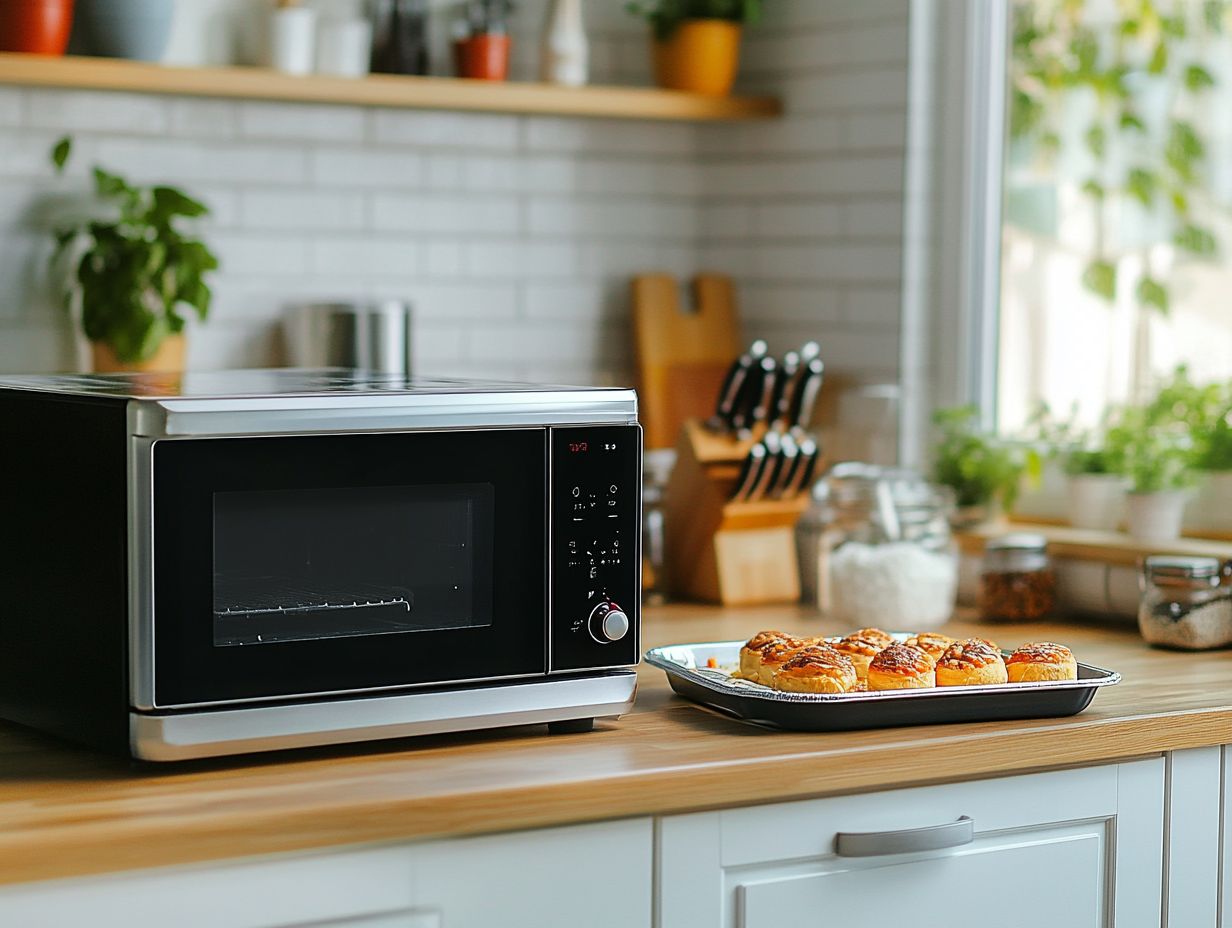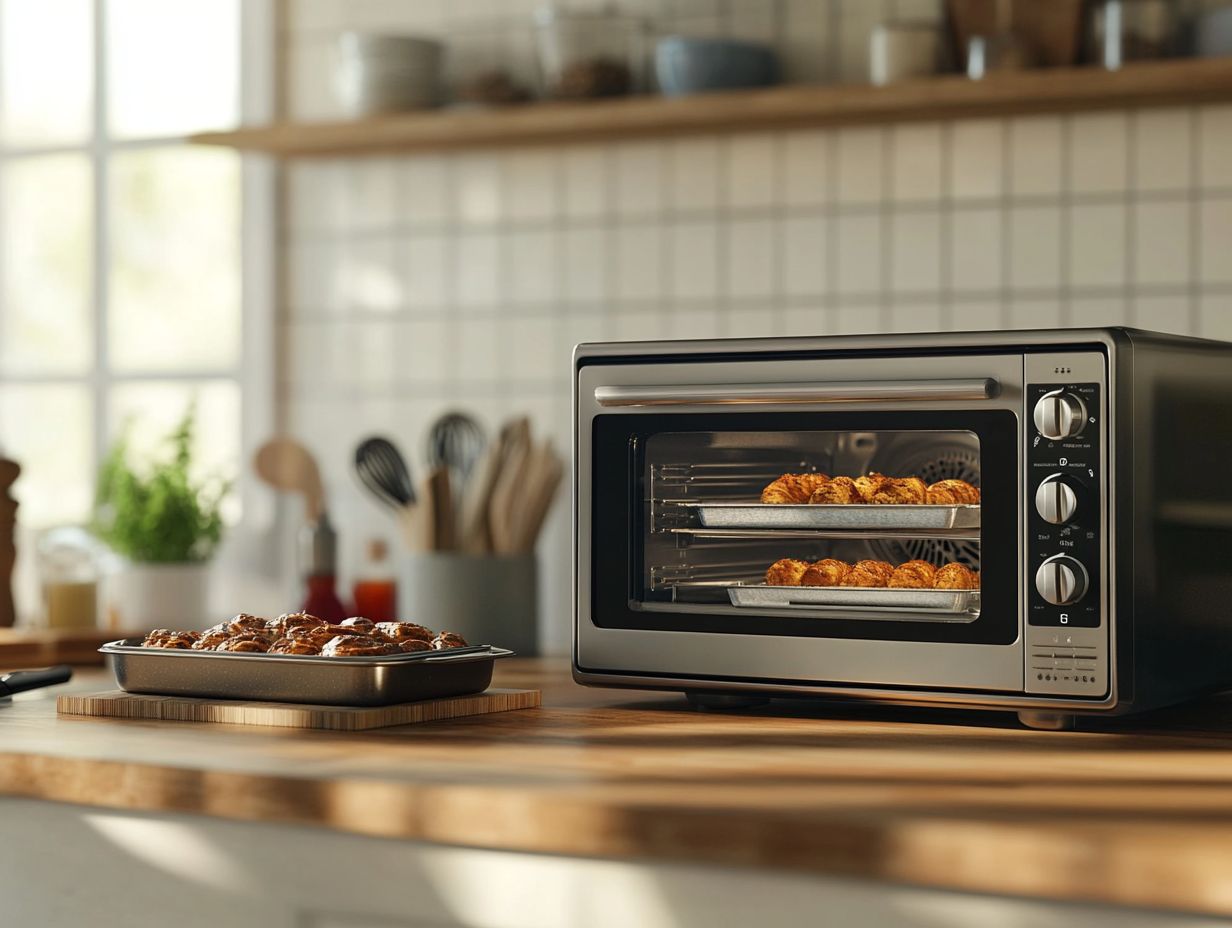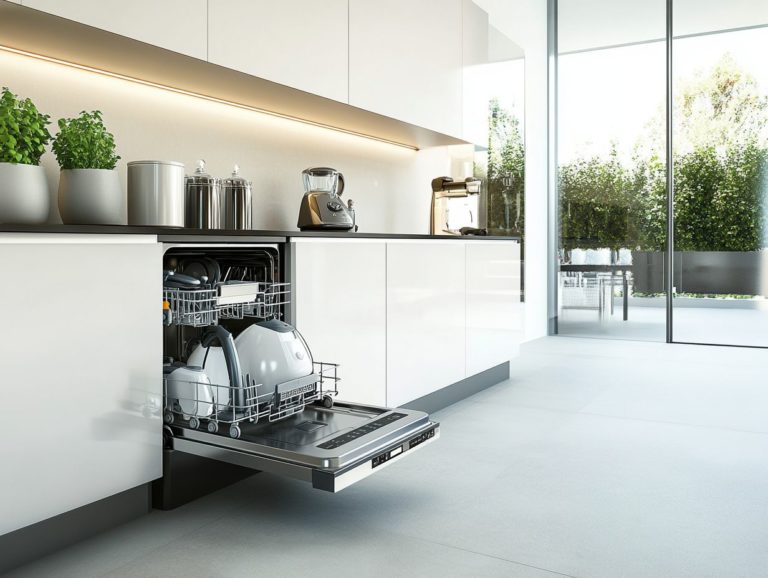Microwave vs. Convection Oven: Which is Better?
When it comes to cooking, selecting the right appliance can truly transform your kitchen experience.
This article delves into the essentials of microwave and convection ovens, illuminating their functions and purposes. It contrasts their cooking methods, carefully weighing the pros and cons of each while also considering energy efficiency and costs. You’ll uncover how these ovens influence food texture and flavor, explore their distinctive features, and learn important safety considerations.
By the end, you’ll have a clearer insight into which oven is the ideal choice for your cooking projects.
Contents
- Key Takeaways:
- Overview of Microwave and Convection Ovens
- Comparison of Cooking Methods
- Energy Efficiency and Cost
- Cooking Performance and Results
- Features and Accessories
- Safety Considerations
- Frequently Asked Questions
- What is the difference between a microwave and a convection oven?
- Which is faster: a microwave or a convection oven?
- Can you use metal in a microwave or a convection oven?
- Which appliance is better for baking: a microwave or a convection oven?
- Are microwaves or convection ovens more energy-efficient?
- Can you use a convection oven as a microwave?
Key Takeaways:

Microwaves are fantastic for quick meals! Convection ovens give you delicious, evenly cooked dishes.
Convection ovens are also energy efficient and cost-effective in the long run, but microwaves may be cheaper to purchase initially.
For food texture and taste, convection ovens create crispier and more flavorful results, while microwaves are better for preserving moisture and tenderness.
Overview of Microwave and Convection Ovens
Microwave and convection ovens are essential kitchen appliances that change how you prepare food, merging cutting-edge technology with efficient cooking methods.
These versatile machines allow for rapid heating through microwaves or evenly distributed heat with convection. This offers you the flexibility to bake, reheat, and more. Their utility in any modern kitchen is undeniable.
Brands like GE have fully embraced these advancements, ensuring you have access to high-quality appliances designed to meet your culinary needs—whether you’re whipping up quick meals or crafting gourmet dishes.
Explanation of Function and Purpose
Microwaves heat food quickly by generating heat inside the food. Convection ovens use a heat source that circulates hot air for even cooking.
In the realm of culinary technology, microwaves use invisible waves that make water in food heat up quickly. This results in efficient, speedy cooking.
On the other hand, convection ovens use fans to distribute hot air uniformly around your dishes. This ensures a consistent cooking temperature, making it ideal for everything from baking to roasting.
With their versatile capabilities, these appliances allow you to create a wide array of dishes—whether you’re reheating last night’s dinner or baking delectable pastries that boast perfectly browned exteriors.
Both microwaves and convection ovens have become essential in modern kitchens, catering to your diverse culinary needs and enhancing your meal preparation experience.
Comparison of Cooking Methods
The comparison of cooking methods between microwaves and convection ovens reveals essential distinctions in food preparation, efficiency, and versatility in your kitchen.
Microwave technology shines with its ability to heat food rapidly. Convection ovens excel at delivering superior baking and ensuring even cooking results.
When you consider these factors, it’s clear how each method can cater to your culinary needs and elevate your cooking experience.
Advantages and Disadvantages
When weighing the pros and cons of microwaves versus convection ovens, you’ll find that both appliances offer unique benefits you’ll love.
Microwaves are known for their lightning-fast cooking, making them your go-to for reheating leftovers or defrosting frozen meals in just minutes. Convection ovens deliver evenly cooked dishes, especially baked goods, thanks to their ingenious hot air circulation.
In terms of energy efficiency, microwaves typically use less electricity for quick cooking tasks. However, convection ovens can be more energy-efficient when tackling larger batches, even if they take a bit longer to cook.
While microwaves may struggle to achieve that coveted crispy texture, convection ovens truly shine, creating a delightful golden crust that elevates flavor and presentation.
In the end, both appliances have their perks. Choose the one that fits your cooking style best!
Energy Efficiency and Cost

When deciding between a microwave and a convection oven, energy efficiency and cost are key considerations. Each option influences your kitchen’s energy consumption and your monthly utility expenses.
Comparison of Energy Usage and Cost
Microwaves typically consume less energy, making them a savvy choice for quick meal preparation. Generally, a microwave uses about 600 to 1200 watts per hour, while a convection oven can draw anywhere from 1200 to 3000 watts.
This significant difference in energy consumption impacts your cooking costs over time. For example, using a microwave for just 15 minutes might cost around 0.18 cents, whereas running a convection oven for the same duration could easily cost about 0.40 cents.
Factors like preheating time and cooking duration are crucial for determining overall efficiency and costs. This underscores why microwaves are often seen as the greener and more economical choice for everyday cooking.
Cooking Performance and Results
The cooking performance and results of microwaves and convection ovens can vary greatly. This impacts the final taste, texture, and overall quality of your meals.
Convection ovens excel in achieving a crispy outer layer, while microwaves provide quick and efficient heating. Understanding these distinctions helps you choose the right appliance for your culinary needs.
Effect on Food Texture and Taste
The impact of cooking methods on food texture and taste is crucial. Each method offers unique characteristics that can enhance or diminish your culinary experience.
Microwave cooking is known for its speed and convenience, often resulting in soft and moist textures, perfect for reheating leftovers or making quick meals. However, it might not deliver that golden-brown crust you love in baked goods.
On the other hand, convection ovens use hot air to cook food evenly, creating a delightful crispiness in pastries or roasted vegetables. By discovering the differences, you can choose the right technique to elevate flavor and achieve the desired mouthfeel in your dishes.
Features and Accessories
When evaluating features and accessories, you’ll find that both microwaves and convection ovens offer a variety of options. These options enhance your cooking experience.
Features may include adjustable power levels, versatile racks, and advanced sensor cooking capabilities. All are designed to improve convenience and ensure safety in your cooking endeavors.
Differences in Available Features and Accessories

The differences in features and accessories can profoundly influence usability in your kitchen. For instance, while microwaves often include touch controls for easy access to preset functions, convection ovens usually offer more cooking modes, like bake, roast, and broil.
This versatility can elevate your culinary creativity. Furthermore, convection ovens often have advanced defrost settings that ensure even thawing, while many microwaves may sacrifice texture during defrosting.
Understanding these unique features allows you to select the appliance that best aligns with your cooking style, transforming meal preparation into an efficient and enjoyable experience.
Safety Considerations
Safety considerations are crucial when using kitchen appliances like microwaves and convection ovens. Understanding potential hazards and implementing necessary precautions helps prevent accidents, ensuring your cooking is safe and efficient.
Potential Hazards and Precautions
Microwaves and convection ovens can be hazardous. It’s important to follow safety precautions for a secure kitchen.
Using these appliances incorrectly can cause burns or fires. This often happens if food is heated unevenly or left unattended.
Always handle hot items carefully. Use oven mitts to prevent slips and spills.
Regular maintenance is key. Clean filters and check for damage to lower risks.
Stay alert for electrical hazards. Ensure your appliances are plugged into the right outlets.
Follow these safety tips to enjoy your cooking tools. This will help minimize accidents in your kitchen.
Frequently Asked Questions
What is the difference between a microwave and a convection oven?
A microwave uses electromagnetic waves, which are invisible energy waves, to heat food quickly. In contrast, a convection oven uses a fan to circulate hot air and cook food evenly.
Which is faster: a microwave or a convection oven?
A microwave is typically faster at cooking food because it uses electromagnetic waves to directly heat the food. A convection oven, however, takes longer to heat up the air inside before cooking.
Can you use metal in a microwave or a convection oven?
No, you should never use metal in a microwave as it can cause sparks and damage to the appliance. However, metal can be safely used in a convection oven as long as it is not touching the walls or heating element.
Which appliance is better for baking: a microwave or a convection oven?
A convection oven is better for baking because it provides more even heat distribution, resulting in more evenly baked goods. Microwaves can be used for basic baking but are not ideal for more complex recipes.
Are microwaves or convection ovens more energy-efficient?
Convection ovens are generally considered more energy-efficient than microwaves because they do not use as much power to heat up the food. However, using a microwave for shorter cooking times may still be more energy-efficient in some cases.
Can you use a convection oven as a microwave?
No, a convection oven is not designed to be used as a microwave. It does not have the same technology to quickly heat up food and may not evenly cook food in this way.





